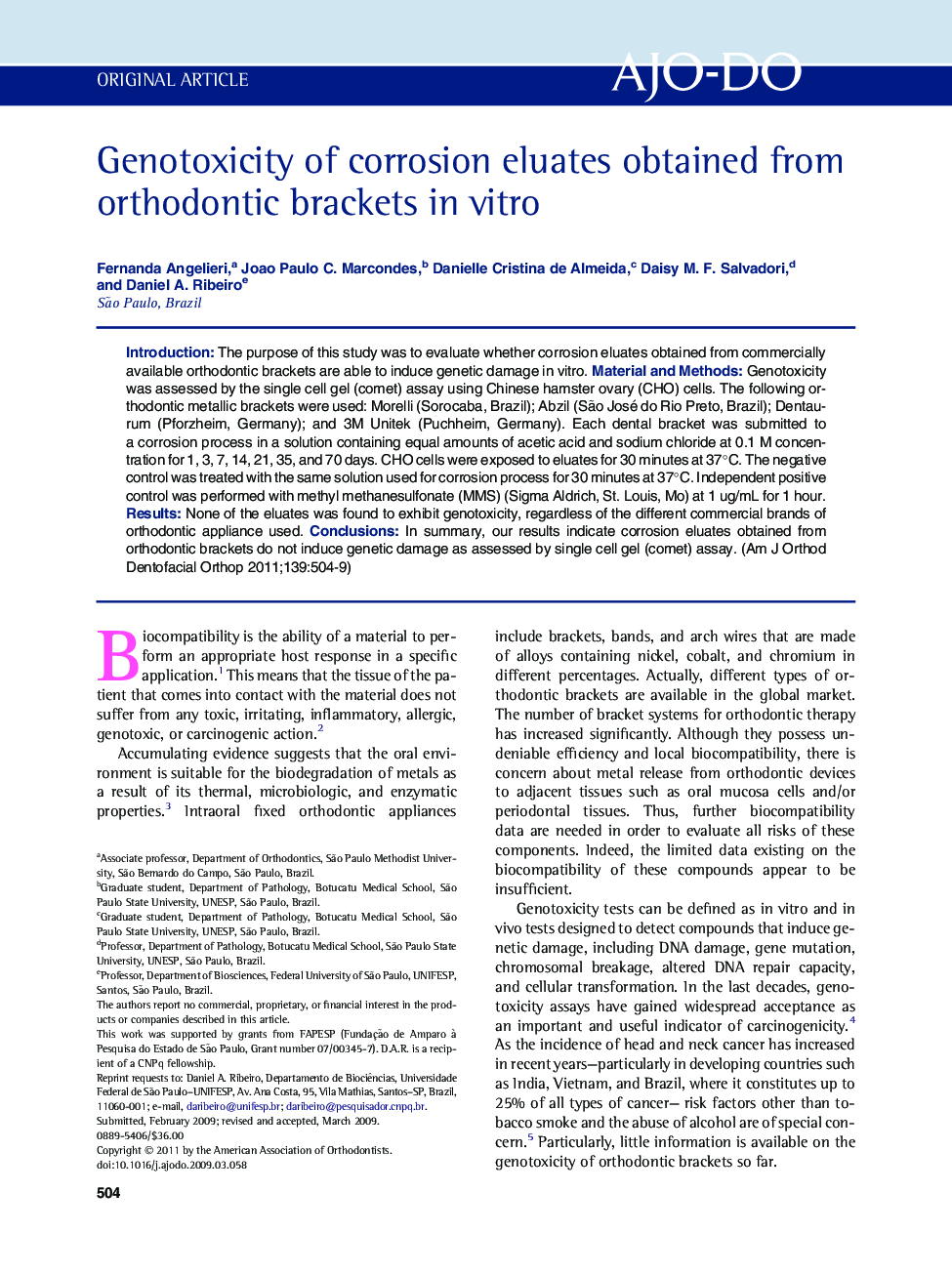| Article ID | Journal | Published Year | Pages | File Type |
|---|---|---|---|---|
| 3117706 | American Journal of Orthodontics and Dentofacial Orthopedics | 2011 | 6 Pages |
IntroductionThe purpose of this study was to evaluate whether corrosion eluates obtained from commercially available orthodontic brackets are able to induce genetic damage in vitro.Material and MethodsGenotoxicity was assessed by the single cell gel (comet) assay using Chinese hamster ovary (CHO) cells. The following orthodontic metallic brackets were used: Morelli (Sorocaba, Brazil); Abzil (São José do Rio Preto, Brazil); Dentaurum (Pforzheim, Germany); and 3M Unitek (Puchheim, Germany). Each dental bracket was submitted to a corrosion process in a solution containing equal amounts of acetic acid and sodium chloride at 0.1 M concentration for 1, 3, 7, 14, 21, 35, and 70 days. CHO cells were exposed to eluates for 30 minutes at 37°C. The negative control was treated with the same solution used for corrosion process for 30 minutes at 37°C. Independent positive control was performed with methyl methanesulfonate (MMS) (Sigma Aldrich, St. Louis, Mo) at 1 ug/mL for 1 hour.ResultsNone of the eluates was found to exhibit genotoxicity, regardless of the different commercial brands of orthodontic appliance used.ConclusionsIn summary, our results indicate corrosion eluates obtained from orthodontic brackets do not induce genetic damage as assessed by single cell gel (comet) assay.
